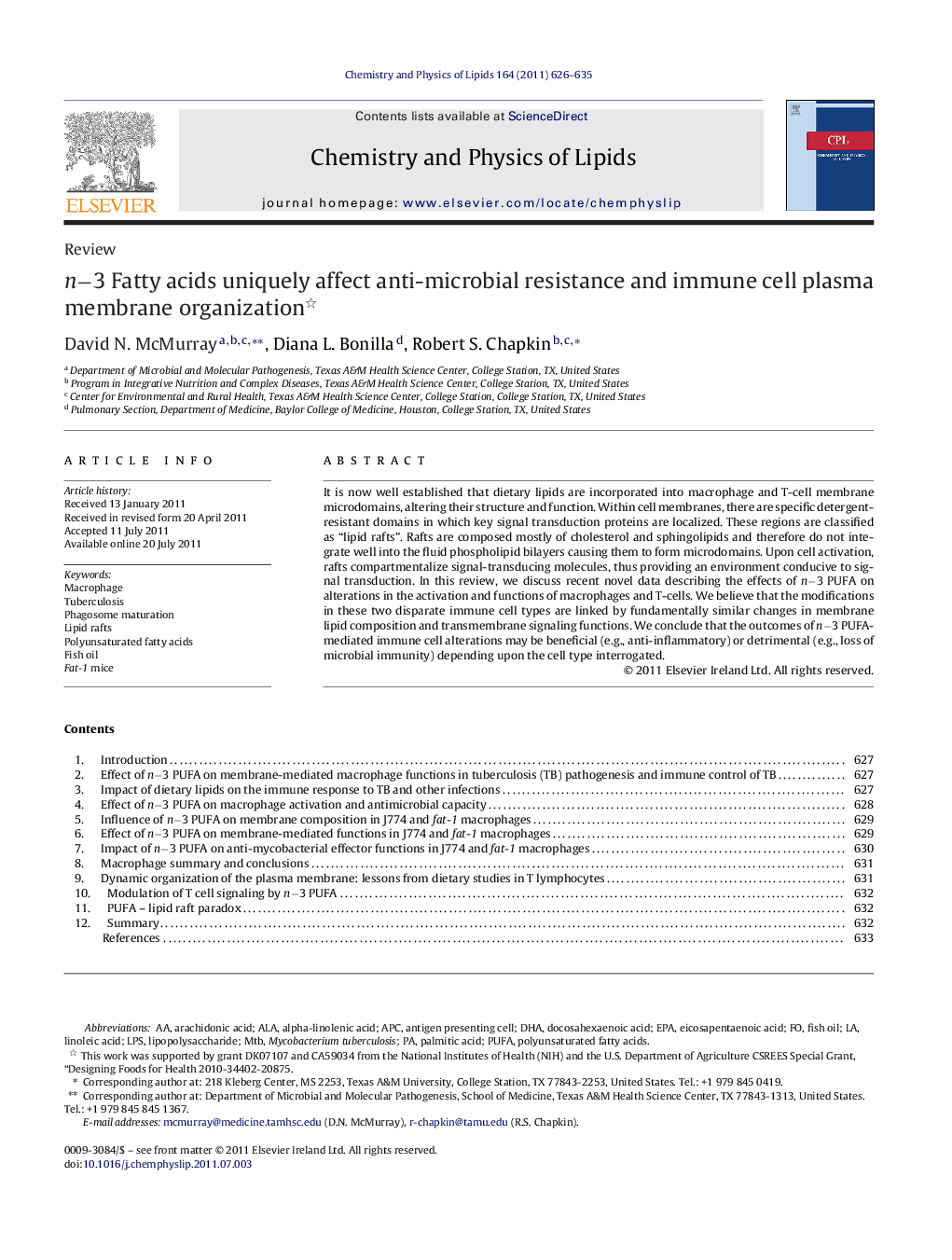| Article ID | Journal | Published Year | Pages | File Type |
|---|---|---|---|---|
| 1252043 | Chemistry and Physics of Lipids | 2011 | 10 Pages |
It is now well established that dietary lipids are incorporated into macrophage and T-cell membrane microdomains, altering their structure and function. Within cell membranes, there are specific detergent-resistant domains in which key signal transduction proteins are localized. These regions are classified as “lipid rafts”. Rafts are composed mostly of cholesterol and sphingolipids and therefore do not integrate well into the fluid phospholipid bilayers causing them to form microdomains. Upon cell activation, rafts compartmentalize signal-transducing molecules, thus providing an environment conducive to signal transduction. In this review, we discuss recent novel data describing the effects of n−3 PUFA on alterations in the activation and functions of macrophages and T-cells. We believe that the modifications in these two disparate immune cell types are linked by fundamentally similar changes in membrane lipid composition and transmembrane signaling functions. We conclude that the outcomes of n−3 PUFA-mediated immune cell alterations may be beneficial (e.g., anti-inflammatory) or detrimental (e.g., loss of microbial immunity) depending upon the cell type interrogated.
► Dietary fatty acids alter membrane-mediated macrophage functions and promote the pathogenesis and immune control of infectious diseases. ► n−3 PUFA uniquely affect membrane composition in J774 and fat-1 macrophages. ► PUFA alter the dynamic organization of the lymphocyte plasma membrane and modulate downstream cell signaling. ► The accumulation of lipid rafts in cell lines may be fundamentally distinct from primary cells.
